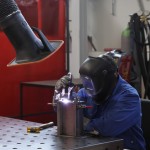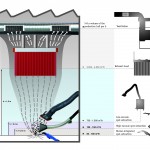New study: Fine dust increases the risk for dementia disorder
When someone is exposed to fine dust for a long time risks to get sick of dementia. This was shown now by a new study. Since during the welding works dusts in the form of particles is often generated, it is necessary to pay special attention here.
It has been proven that the long-term exposure to fine dust leads to increased risk of stroke and a number of other diseases in adults. However, there are new results in this respect in the study “Long-Term Exposure to Fine Particulate Matter, Residential Proximity to Major Roads and Measures of Brain Structure“, made in the USA, which are published in the specialized publication Stroke: According to the study, dusts in the form of particles can cause also dementia. To this purpose, the researchers have studied more than 900 brains of test subjects older than 60 years. The less the exposure the larger and healthier were the brains.
The results are of interest not only for everyday life people, but particularly for welders, because: According to the study, already a relatively low exposure to fine dusts leads to angiopathy of the small blood vessels and to brain atrophy (brain shrinkage). This means that even in the methods that use supposedly less hazardous materials, such as in the case of WIG welding, it is absolutely necessary to suction out the welding smoke. In addition to the fine dust exposure during welding, there are also other hazardous substances which are generated in the work with certain materials.
The causes for the fine dust effects are not yet clearly proven. However, the researchers believe that the inflammations caused by the deposition of respirable fine dust particles plays an important role in this respect. According to official studies of the Wood and Metal Trade Association, about 98.9 per cent of the particles in the welding smoke are smaller than 0.4 µm. At this size, they belong to the respirable particles. This means: The large part of the welding smoke is hazardous for the health of the welders and the workers around them.





